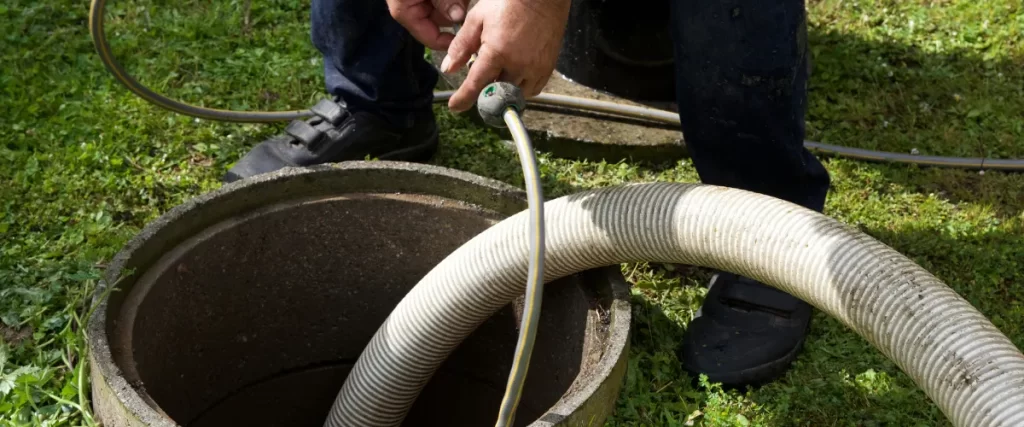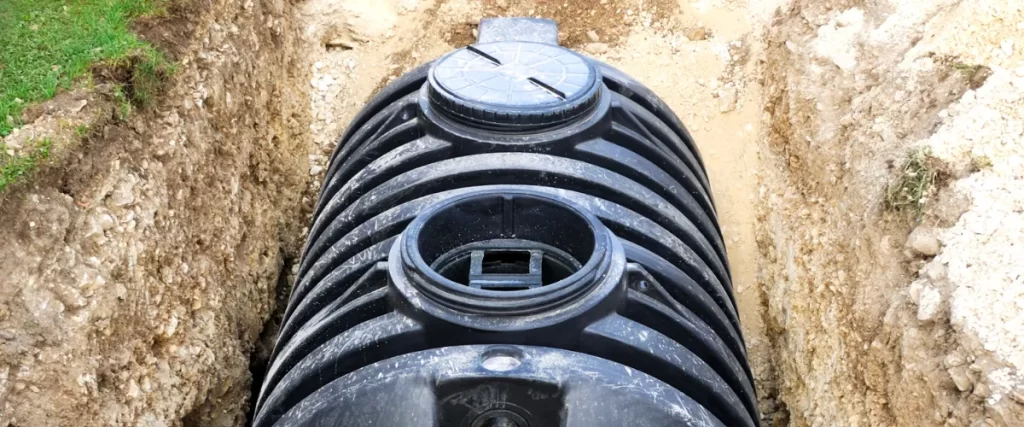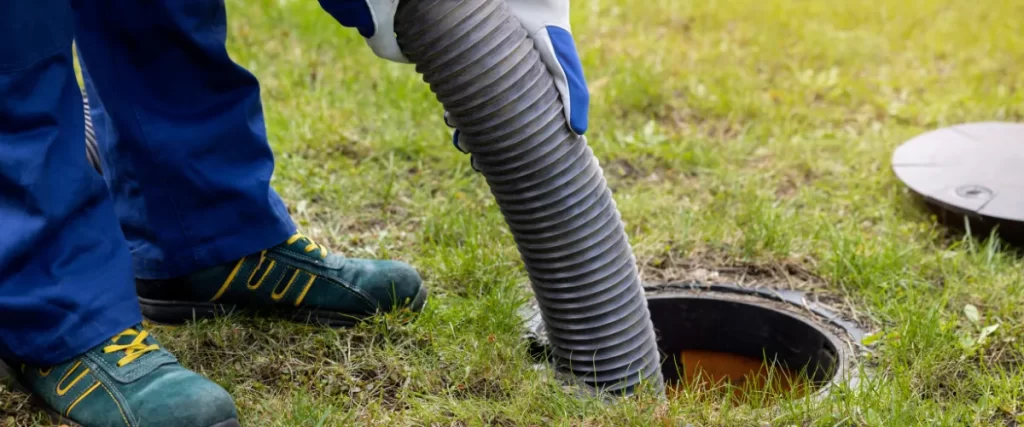When it comes to ensuring your home’s wastewater system runs smoothly, choosing the right septic tank size is essential. In Aurora, where local soil conditions and water usage can vary, the correct septic tank not only prevents costly repairs but also maintains a healthy environment for your home.
In this guide, we’ll explore why septic tank size matters, what factors influence the right size for your property, and how to determine your specific needs.

Why Septic Tank Size Matters
A properly sized septic tank is the foundation of an efficient wastewater system. An undersized tank can lead to frequent backups and costly repairs, while an oversized tank might result in inefficiencies and unnecessary expenses.
By choosing the right size, you ensure that the system effectively treats wastewater and minimizes environmental risks.
Additionally, compliance with local codes is crucial. Aurora’s building regulations often specify septic system requirements, ensuring that tanks are designed for safe and sustainable operation. This proactive approach protects both your home and the local ecosystem.
Factors to Consider When Choosing a Septic Tank
Selecting the appropriate septic tank size depends on several key factors:
- Household Size: The number of occupants in your home determines wastewater volume. More people mean more frequent use, so a larger tank is often necessary.
- Water Usage: High water consumption—due to multiple bathrooms, laundry machines, or irrigation systems—requires a tank that can handle higher volumes.
- Soil Conditions: The type and permeability of your soil affect how well the septic system drains. Local soil tests help determine the right system design and tank size.
- Future Expansion: If you plan to expand your home or increase occupancy in the future, consider a tank that can accommodate growth without immediate upgrades.
- Local Regulations: Always check Aurora’s building codes for septic system specifications, which may dictate minimum tank sizes and installation standards.

Common Septic Tank Sizes and Their Applications
Below is a table summarizing typical septic tank sizes and the household scenarios they are best suited for:
| Tank Size (Gallons) | Household Occupancy | Typical Use |
| 750 | 1-2 | Small households, minimal water usage |
| 1,000 | 3-4 | Average households with moderate water consumption |
| 1,250 – 1,500 | 5-6 | Larger households or those with higher water usage |
| 2,000+ | 7 or more | Large households or potential future expansion needs |
This table serves as a general guideline; your unique circumstances may require adjustments based on your specific water usage and local conditions.
How to Calculate Your Septic Tank Requirements
Determining the right septic tank size involves assessing your current water usage and anticipating future needs. Follow these steps to calculate your requirements:
- Count Occupants: Start by tallying the number of people in your home. Consider all regular users.
- Assess Water Usage: Look at your monthly water bills or usage patterns to estimate peak consumption.
- Consult Local Codes: Reference Aurora’s septic system regulations to understand the minimum requirements.
- Engage a Professional: For an accurate assessment, hire a licensed contractor or septic system specialist who can perform detailed calculations and soil tests.
Quick Calculation Tips:
- Multiply the number of occupants by an estimated usage factor (e.g., 75-100 gallons per person per day).
- Adjust based on water-saving fixtures or high-consumption appliances.
- Factor in any planned additions to your household or property.
Working With Professionals
Septic system installation and maintenance require specialized expertise. Consulting with a local contractor who understands Aurora’s specific soil and regulatory conditions can help ensure that your septic tank is properly sized and installed.
Professionals can perform thorough site evaluations, offer tailored recommendations, and guide you through the permitting process.
If you’re planning a septic system upgrade or installation in Aurora, partnering with experienced local experts not only streamlines the process but also provides peace of mind knowing your system will be both efficient and compliant with local codes.

Leading Septic Tank Manufacturers
When choosing a septic tank, rely on trusted manufacturers known for quality, durability, and innovative designs ensuring long-term performance.
- Norwesco: Specializes in durable polyethylene tanks, offering resistance to cracks and corrosion, ideal for long-term use.
- Ace Roto-Mold: Renowned for customizable tank options, focusing on strength and versatility for varied installation needs.
- Snyder Industries: Provides high-quality septic tanks with advanced designs that emphasize durability and leak prevention.
- Plastic-Mart: A leading supplier featuring a wide variety of tanks built for efficiency and reliable service.
- Bio-Microbics: Offers innovative and environmentally friendly systems designed for effective water treatment and sustainability.
Frequently Asked Questions
1. What factors should I consider when choosing a septic tank?
When selecting a septic tank, consider the tank’s size, material, durability, and compatibility with your specific installation requirements. It’s essential to evaluate your household’s wastewater volume and local regulations to ensure compliance and efficiency.
2. How does the design of a septic tank impact its performance?
The design plays a crucial role by ensuring proper wastewater separation and treatment. Tanks with advanced designs, like those from Snyder Industries, focus on durability and leak prevention to enhance performance and longevity.
3. Are there environmentally friendly septic tank options available?
Yes, companies like Bio-Microbics specialize in environmentally sustainable systems that aim to treat wastewater efficiently while minimizing environmental impact. These systems often include innovative features to promote eco-friendliness.
4. What are the advantages of plastic septic tanks over traditional materials?
Plastic septic tanks, such as those available from Plastic-Mart, are lightweight, easy to install, and resistant to corrosion and cracking. They are also highly durable and cost-efficient compared to traditional materials like concrete or steel.
5. How can I ensure proper maintenance of my septic tank?
Regular maintenance includes periodic inspections, pumping to remove solids, and avoiding overuse of water or harmful chemicals. Consult the manufacturer’s guidelines, such as those from Norwesco or Snyder Industries, for specific recommendations tailored to their tank designs.

Why Choose Our Team?
Our team has been delivering exceptional septic tank services for years, combining expertise and professionalism. Work with the best to ensure quality results and long-term savings. Contact us at (720) 507-4076 to start your project today!
